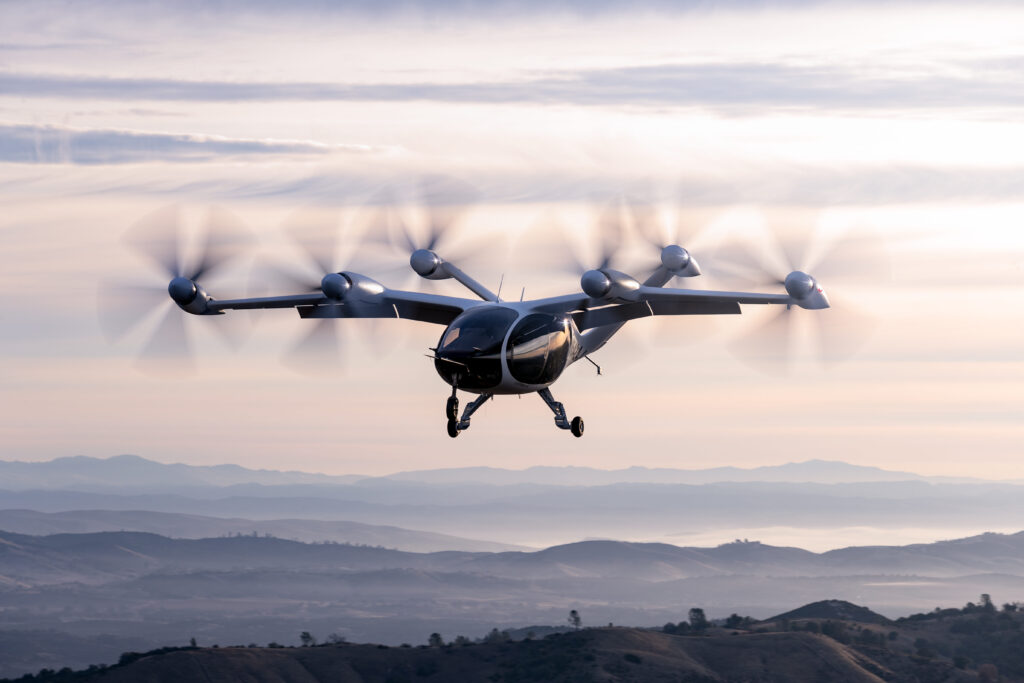Making the connection: eVTOLs to transform regional transportation
Over the past several years, new landmark transportation hubs like Grand Central Madison in Manhattan and Newark Liberty Airport’s Terminal A, along with roadways like the New Jersey Turnpike expansion, have made travel more convenient for the people of New York and New Jersey. Now—with the continuing development and anticipated integration of electric Vertical Takeoff and Landing (eVTOL) aircraft into the transportation network—connectivity may be dramatically improved across the region.
Expected to be fully developed within the next few years, eVTOLs are not your typical aircraft. They combine the vertical take-off and landing of helicopters with the horizontal flight of airplanes, and they are as quiet as common house noise. They are the next wave in aviation innovation and very well could change the way we travel across the region. Often considered flying taxis, when fully developed, these aircraft will carry up to six people, including the pilot, and depending on the transportation network may deliver point-to-point service. Here are four ways eVTOLs may transform transportation for people across the region.
Speeding commutes
Compared to helicopters, airplanes and even drones, eVTOLs are unique in that they take off and land from nontraditional locations such as parking garages, shopping malls and open fields. Since they travel at speeds equivalent to a high-speed train, eVTOLs could dramatically reduce travel time and help alleviate traffic congestion. The combination of rapid travel and flexible connections has the potential to provide a faster, easier commute for workers traveling to larger cities and expand work, educational and retail opportunities for those living in more rural areas.
Easing airport travel
As airlines are key investors in eVTOL development, these aircraft are expected to provide connectivity to and from airports. Many airlines view eVTOLs as a transportation mode that may expand their passenger base, since eVTOLs can quickly deliver passengers to airport terminals for connecting to regional or international flights. While useful for major international airports such as JFK and Newark, eVTOLs could become particularly important for more rural parts of New York and New Jersey, as the aircraft hold the potential to increase passenger traffic to regional airports, driving airport expansion and economic growth.
Reducing greenhouse gas emissions
eVTOLs are powered by electricity stored in onboard batteries that are charged from clean energy sources. Unlike helicopters and airplanes, eVTOLs are quiet and do not produce carbon emissions. As the industry advances and eVTOLs are more widely in use, they will become a viable alternative to bus or car travel, which would serve to improve air quality by reducing roadway congestion and emissions. Once the technology matures, an eVTOL journey should be similar in cost to an Uber or Lyft.
Moving freight faster
In addition to moving passengers, eVTOLs are expected to move freight. Many of the major cargo companies are already planning to integrate eVTOLs into their feeder fleets. The speed of the aircraft, combined with their ability to take-off and land from flexible locations, is expected to help advance shipping, particularly to rural locations. As the use of eVTOLs for shipping evolves, people living in rural and urban areas may see faster deliveries.
Making it work
Change and growth require insight and experience, something AECOM’s aviation planners have in abundance. We understand what’s needed for success and are delivering services across all aspects of this ascendant industry. We’re working to help design, locate and place designated terminals—known as vertiports—that allow for expedited passenger movement, maintenance and battery charging, while providing a completely new and enjoyable passenger experience.
We are also using our extensive environmental knowledge to assist with National Environmental Policy Act (NEPA) and other state environmental permitting. Our energy experts are examining eVTOL charging requirements, looking at their impact on the energy grid and the potential for grid development, so utility companies and eVTOL operators can plan for evolving market needs. And importantly, we are helping guide our clients through the intricate process of aviation design and aviation regulations. With these transformative efforts at work, eVTOL implementation is on the horizon, bringing the promise of greater connectivity and more convenient travel options throughout New York and New Jersey.







